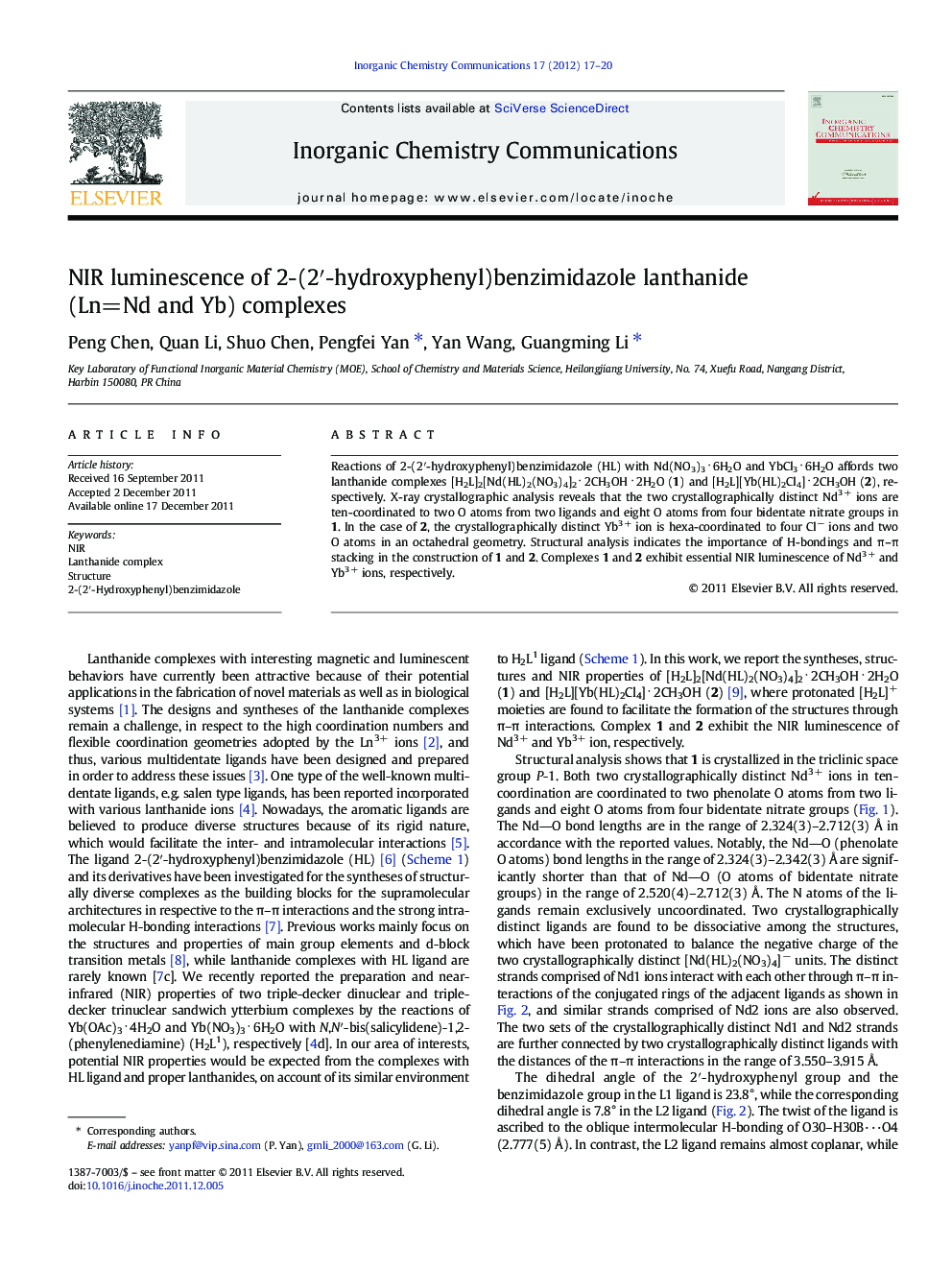| Article ID | Journal | Published Year | Pages | File Type |
|---|---|---|---|---|
| 1302048 | Inorganic Chemistry Communications | 2012 | 4 Pages |
Reactions of 2-(2′-hydroxyphenyl)benzimidazole (HL) with Nd(NO3)3 ⋅ 6H2O and YbCl3 ⋅ 6H2O affords two lanthanide complexes [H2L]2[Nd(HL)2(NO3)4]2 ⋅ 2CH3OH ⋅ 2H2O (1) and [H2L][Yb(HL)2Cl4] ⋅ 2CH3OH (2), respectively. X-ray crystallographic analysis reveals that the two crystallographically distinct Nd3+ ions are ten-coordinated to two O atoms from two ligands and eight O atoms from four bidentate nitrate groups in 1. In the case of 2, the crystallographically distinct Yb3+ ion is hexa-coordinated to four Cl− ions and two O atoms in an octahedral geometry. Structural analysis indicates the importance of H-bondings and π–π stacking in the construction of 1 and 2. Complexes 1 and 2 exhibit essential NIR luminescence of Nd3+ and Yb3+ ions, respectively.
Graphical abstractTwo unique 2-(2′-hydroxyphenyl)benzimidazole lanthanide complexes [H2L]2[Nd(HL)2(NO3)4]2 ⋅ 2CH3OH ⋅ 2H2O (1) and [H2L][Yb(HL)2Cl4] ⋅ 2CH3OH (2) have been isolated. The NIR luminescence of Nd3+ and Yb3+ ions for 1 and 2 are investigated, respectively.Figure optionsDownload full-size imageDownload as PowerPoint slideHighlights► Two 2-(2′-hydroxyphenyl)benzimidazole complexes have been prepared. ► Weak interaction dominates the structural construction. ► The ligand promotes the NIR luminescence of Nd3+ and Yb3+ ions.
